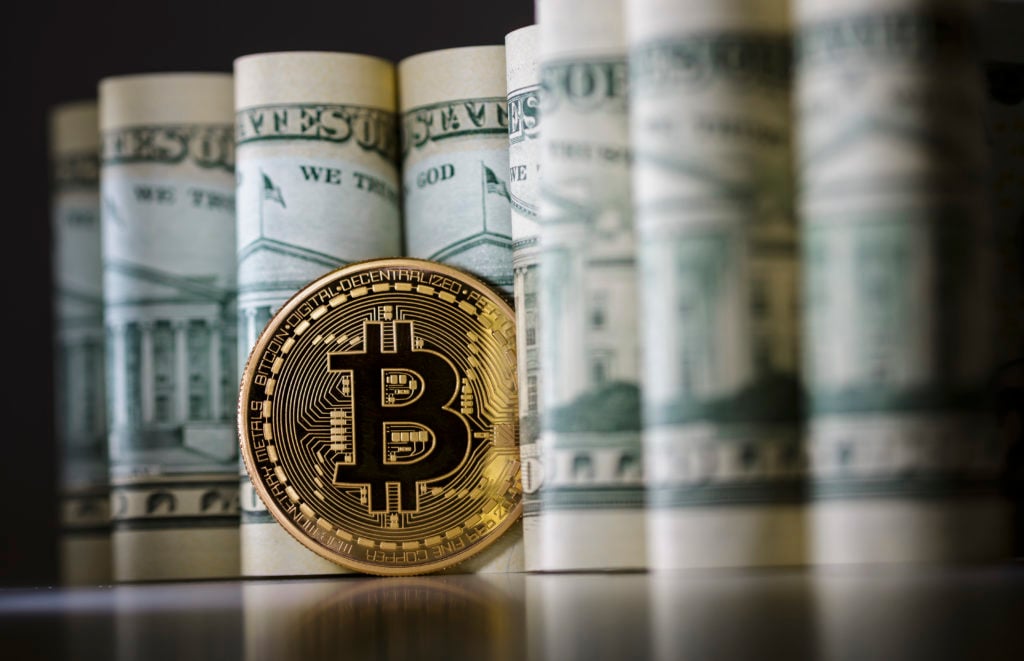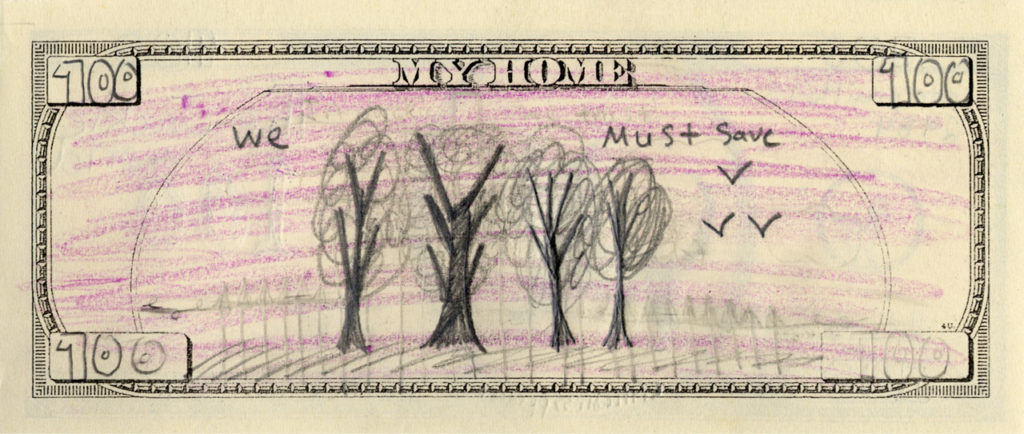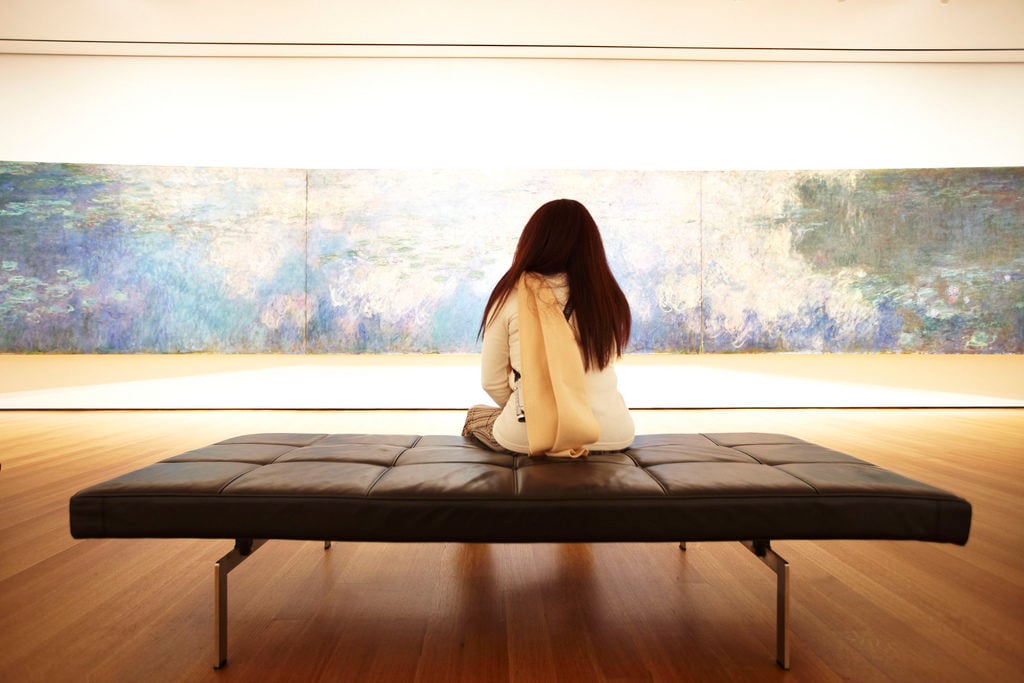Art World
Cryptocurrencies, Explained: The Beginner’s Guide the Art World Needs Right Now
In the first of our three-part series, Tim Schneider offers an art-world primer on the technology everyone is talking about—but few understand.

In the first of our three-part series, Tim Schneider offers an art-world primer on the technology everyone is talking about—but few understand.

Tim Schneider

This piece is the first in a three-part series that explores the potential art-world impact of cryptocurrency, followed by Part II and Part III.
The art world isn’t exactly known for being at the forefront when it comes to embracing new technologies. Given its late-adopting habits, you might assume our industry would largely dodge the culture-consuming chatter about Bitcoin and other cryptocurrencies—and maybe this would even be a blessing in disguise, since just yesterday the price of Bitcoin dove by more than 20 percent.
But almost no space is safe forever, and a slew of recent news items proved that even the art mainstream is wading into the deep end of cryptocurrencies, however tentatively.
In the past two weeks alone, we saw the unwinding of a minor controversy around a supposed Richard Prince “ready-made” cryptocurrency (spoiler alert: THAT Richard Prince was never involved), the New York Times arts section delved into the digital-collectible crazes known as CryptoKitties and CryptoPunks, and Kodak even launched its own Bitcoin alternative called, you guessed it, KodakCoin.
Despite the avalanche of conversation and investment dollars plowing into cryptocurrencies, though, most people inside and outside the arts still find the technology confounding. Buzzwords like “mining” and “decentralization” get tossed around with the same reckless abandon as casual lies on a hookup app, but the actual meaning beneath the jargon remains elusive to most people (and understandably so!).
Since it looks like cryptocurrencies will remain a part of the art-industry debate for some time, I saturated myself in the minutiae so you don’t have to. And after coming up for air, I can say this: While there are still many, many questions about their adoption, implementation, and value, cryptocurrencies have the potential to transform multiple facets of the art world, from the authentication of digital works to the protection of transactions to the creation of new forms of cultural exchange.
Here’s my attempt at a highly approachable beginner’s guide to the technology. To begin, we have to take a step back from cryptocurrencies to wrestle with an even more foundational innovation called the blockchain.
Blockchains are often described as “decentralized (or distributed) digital ledgers,” a phrase which generally seems to be about as illuminating to the uninitiated as explaining acid jazz as “a live-instrument-based offshoot of the rare groove movement.”
So let’s start with the simplest aspect: the idea of a digital ledger.
In practice, this just means that a blockchain is an ongoing, digitized record of transactions. Crucially, this ledger is “append only,” meaning that past entries can never be removed. If something about an earlier transaction needs to be changed, a new entry gets added to reflect the alteration. For example, if I paid off a debt, the debt would not be erased from the ledger in a literal sense. Instead, a new entry would be written to zero out my balance.
The result is that a blockchain “ledger” only ever gets longer (or, to adopt the lingua franca of the crypto community, “higher”). All of the new transactions that happen over a set time period are grouped into a bundle, or “block.” And every time a new block gets created and properly verified (more on verification later), the new block gets added on top of the blocks of transactions that came before it.
Hence: blockchain.
I mean, have any of you ever encountered a situation where it would be valuable to see an artwork with a comprehensive, unbroken chain of title, especially one not just cobbled together from musty scraps of paper and age-addled secondhand recollections? Then read on!

Mel Chin’s The Fundred Reserve. Courtesy Mel Chin.
A cryptocurrency is just one use case for blockchain technology. To explain cryptocurrencies, though, it’s helpful to dissect the second part of the name first.
Technically speaking, a traditional currency is nothing more than a record of debt. Every US dollar in circulation represents an amount the American federal government owes to the bearer. So exchanging US dollars means transferring debt from one party to another. Since Richard Nixon phased out the gold and silver standards in the early 1970s, the actual paper has only had value because it’s been backed by “the full faith and credit” of our friends (ahem) in Washington.
On one level, cryptocurrencies work the same way as traditional currencies. The digital ledger associated with each one—again, a blockchain—merely tracks debts. The innovation lies in the “crypto” portion of the term.
Well, aside from being able to big-time every annoying hedge-fund bro at your next opening by explaining to them how their money is ultimately just a story we as a society have agreed to tell each other, the revolutionary possibilities of cryptocurrencies don’t materialize until we get through the other half of the definition. Cool?
Every cryptocurrency isn’t just a digital asset. It’s a SCARCE digital asset. Every new cryptocurrency begins with the founders writing what’s known as a white paper, which basically amounts to a business plan for a blockchain.
A good white paper explains conceptual elements like what the cryptocurrency is and why the world needs it (I mean, relatively speaking). But it also addresses simpler, more practical aspects, including the total quantity of the cryptocurrency that will ever exist.
As an example, Bitcoin’s creator(s) capped the supply at 21 million tokens. Which may not seem scarce from a numerical standpoint. But the key point is that it is a fixed number, meaning the age-old rules of supply and demand apply: the greater the demand, the higher the price for each existing unit.
Granted, this is also partly why cryptocurrencies in general—and Bitcoin especially—regularly go through insane price swings while speculators, regulators, and merchants continue to grapple with this innovation. Still, volatility aside, it would be shortsighted to throw the blockchain out with the bathwater.
Until the emergence of blockchains, digital scarcity was an internally incoherent concept, like “dry rain” or a “fun heart attack.” Since anything digital is, at base level, just a sequence of binary code, infinite perfect replicas could be created by anyone who copied that code.
This normally makes the idea of exclusive ownership impossible, or at least extremely fraught, in the digital realm. Blockchains and cryptocurrencies solve that problem. So if you work with digital art—which, considering the direction our culture is moving, you likely will one day, even if you don’t now—this is relevant to you and your business.

Installation view of team Lab’s Living Digital Forest and Future Park at Pace Gallery. Courtesy of the artist and Pace.
If you create a GIF and every person on the Internet can download it onto their phone without permission, who “owns” the GIF? Why would anyone buy the original, even at a low price, let alone a high one? And how would the purported owner enforce their ownership rights if they felt they’d been violated?
Historically, the answer to that last question has been centralization. For nearly as long as property has existed, its protection has been outsourced by a community to some overlord: a king, a government, or in the case of modern finance, a bank.
But the problem with outsourcing power to a central authority is that the resulting power can be abused or undermined. All the information on, say, the average person’s savings account stays siloed on the data servers owned and operated by that person’s bank. If someone were to hack the bank, or if the bank chose to steal from its customers (crazy thoughts, I know!), centralization would backfire.
In theory, blockchains—again, decentralized digital ledgers—are immune to these pitfalls. The “decentralized” aspect means that no one central authority maintains the records or holds the resulting power.
Instead, the ledger is distributed across a network of computers owned and operated by unrelated entities, each of which holds a matching ledger that is regularly updated and verified in real time. So really, this isn’t just relevant to those who deal with digital art—it’s relevant to anyone in the art market who cares about secure exchange and privacy. Which is, basically, everyone.
I’m not saying you should blow $20,000 on one, but should you care about the concept? Probably, yeah.
We all know that relationships rule in the art industry, particularly in the primary market. Even if a collector has the money to buy a particular work, they may not have the pedigree or connections to access it. Same for artists hoping to show and sell their work in galleries: It’s often as much about who you know as what you’re capable of.
Decentralization means that all true uses of blockchain technology are “permissionless.” Without a central authority governing the resources, would-be participants don’t need to seek out approval from a gatekeeper to contribute. So anyone with the means and intent could make, buy, and sell rare digital artwork inside a community without needing to know a single person of standing in the traditional art market.
Trust me, you don’t want to dig too deep into this unless you’re ready to plunge into a quicksand pit of jargon like “merkle tree root” and “Secure Hash Algorithm-256.” But the basics are important, and they lead us back to the “crypto” part of cryptocurrencies.
Essentially, for a new block of transactions to be added to an existing blockchain, some computer somewhere has to solve a complex cryptography problem, i.e., crack a numerical code. That problem involves verifying the continued integrity of the transactions in the pre-existing blockchain, as well as those in the new block. The process of solving this problem is known as “mining.”
Once a computer solves the problem, every other computer hosting the ledger can instantly verify that the solution is correct. As a reference point, Patrick O’Shaughnessy, whose podcast miniseries Hash Power was instrumental to my still-flawed understanding of this space, equates mining to solving a jigsaw puzzle: Once the work has been done, anyone can see at a glance that the pieces fit as intended.
The multiple layers of protection provided by this process theoretically allow any of us, anywhere, to completely trust blockchain-based transactions. And counterintuitively, that trust isn’t supposed to come DESPITE the fact that the blockchain is hosted on a network of computers whose owners we will never meet, personally communicate with, or even know the identity of. It’s supposed to come BECAUSE of the anonymity and the spread of the data. Wild, right?
Unless you have an extreme fetish for anxiety, shame, and job insecurity, I’m going to assume that you don’t want to be sued for unintentionally selling fake artworks.
Suppose some lowlife attempted to fraudulently alter a single piece of data in the chain for a rare digital artwork being offered to your house—say, to contend that he was the rightful owner of someone else’s work. Blockchain technology means that the irregularity would be skunked out during the mining phase and neutralized. In theory, this means authenticity is 100 percent guaranteed and 100 percent verifiable at all times, forever.

A MoMA visitor with Claude Monet’s Reflections of Clouds on the Water-Lily Pond. Courtesy of Jason Brownrigg, MoMA.
I see what you did there. And mercifully, yes.
For its service, the computer that cracks the next cryptography problem to extend a blockchain receives a reward. That reward takes the form of a scarce digital asset, generically called a “token” or “coin,” whose ownership would be tracked on the incorruptible blockchain to which it had just contributed.
Hmmm, a currency exchanged for cryptography work. What should we call it, folks?
Exactly! Cryptocurrencies.
With all that exposition under our belts, then, we can consider the intrigue of several different blockchains and cryptocurrencies now filtering through the art space. Tune in next time for part II, where we’ll explore blockchain-based artworks, before closing with an exploration of how the technology can impact the business side in part III.